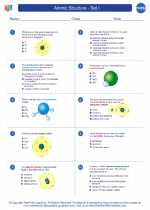Pulsars
Pulsars are highly magnetized, rotating neutron stars that emit beams of electromagnetic radiation out of their magnetic poles. These beams of radiation are observed as pulses of light as the neutron star rotates, hence the name "pulsar".
Formation of Pulsars
Neutron stars are formed when massive stars undergo a supernova explosion at the end of their life cycle. During the explosion, the core of the star collapses, and if the core's mass exceeds the Chandrasekhar limit (about 1.4 times the mass of the Sun), it collapses into a neutron star. The conservation of angular momentum causes the neutron star to rotate rapidly, and if it has a strong magnetic field, it can become a pulsar.
Characteristics of Pulsars
Pulsars are characterized by their extremely regular and precise pulses of radiation. They have incredibly strong magnetic fields, typically around a billion times stronger than the Earth's magnetic field. Pulsars also rotate at very high speeds, with some completing hundreds of rotations per second. This rapid rotation and strong magnetic field are what give rise to the emission of radiation from the pulsar's magnetic poles.
Studying Pulsars
Scientists study pulsars to learn more about extreme physical conditions such as strong magnetic fields, high densities, and relativistic effects. Pulsars are also used as natural celestial clocks due to their highly regular pulses, which can be used to study the effects of gravitational waves, interstellar medium, and other astrophysical phenomena.
Study Guide
If you are studying pulsars, here are some key topics to focus on:
- Neutron star formation and characteristics
- Mechanism of pulsar radiation emission
- Properties of pulsar magnetic fields
- Methods of observing and studying pulsars
- Applications of pulsar research in astrophysics
Additionally, it would be beneficial to familiarize yourself with the historical and modern discoveries related to pulsars, as well as the contributions of prominent astrophysicists in the field.
Good luck with your studies!
.◂Chemistry Worksheets and Study Guides High School. Atomic Structure - Set I

 Worksheet/Answer key
Worksheet/Answer key
 Worksheet/Answer key
Worksheet/Answer key
